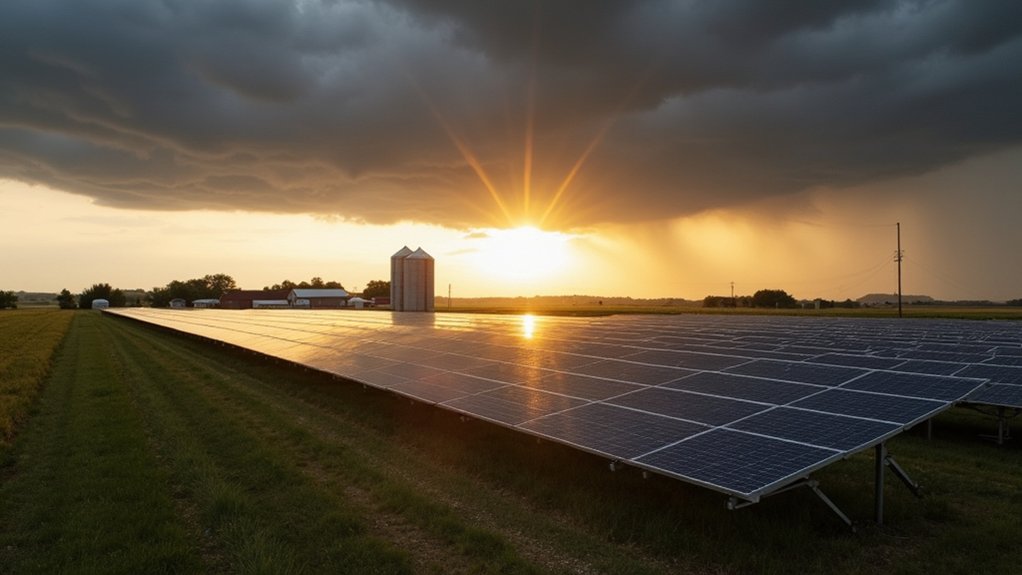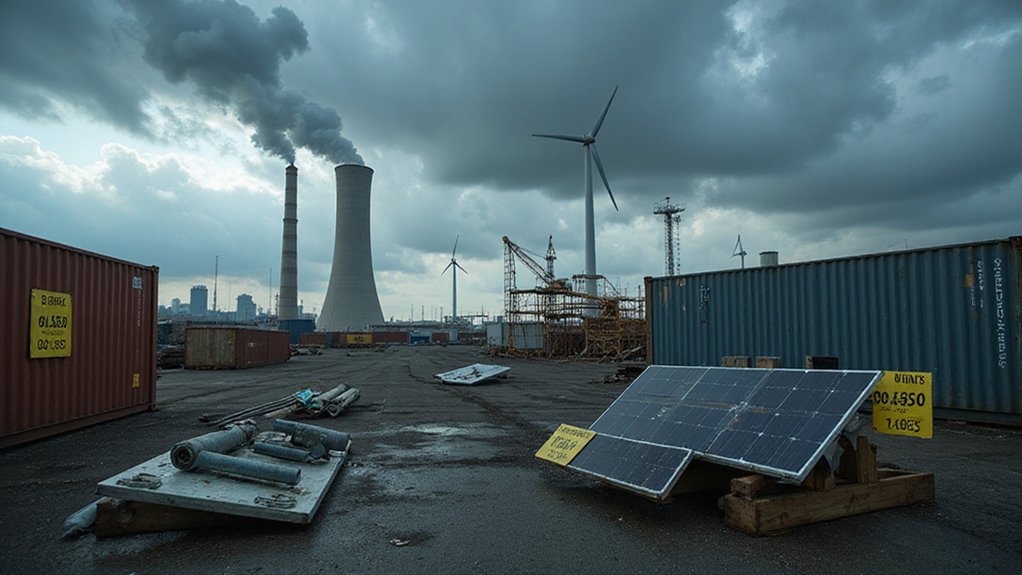Minnesota’s climate ambitions face serious threats from new legislation. With Minneapolis targeting net-zero emissions by 2050 and allocating millions for building efficiency, green jobs, and tree planting, recent bills could derail everything. The Climate Equity Plan, which directs 40% of its $8-10 million annual funding to underprivileged communities, hangs in the balance. Legal challenges have already impacted the Minneapolis 2040 plan. The future of rural solar development now sits in legislative crosshairs.
Despite ambitious efforts to prioritize climate action, Minnesota’s climate legacy hangs in the balance. Minneapolis has laid out bold plans to reach net-zero greenhouse gas emissions by 2050, but recent legislative challenges threaten to derail this progress. The city’s Climate Equity Plan aims for 75% emissions reduction by 2030, showing the urgency in their climate approach. The Climate Legacy Initiative sounds impressive on paper—$10 million annually for climate action. Nice. But what happens when state bills potentially undermine local authority?
Minneapolis isn’t playing around with its climate commitments. The city has allocated serious cash—about $8-10 million each year starting in 2024—to implement its Climate Equity Plan. That’s triple what they previously invested. They’re spreading the wealth too: $4.7 million for building efficiency, $1.4 million for green job training, and $850,000 just to plant and maintain trees. Not too shabby.
The 2023 Minnesota legislative session seemed promising, with provisions that actually empowered local governments to take climate action. But that momentum is facing roadblocks. Legal challenges have already hampered the Minneapolis 2040 plan. And now, proposed bills could further complicate the path forward.
Let’s be real. Achieving carbon neutrality by 2050 isn’t just about fancy press releases and photo ops. It requires sustained funding and evolving policy support. Minneapolis is trying—investing $8.5 million annually in weatherization and energy efficiency for businesses and homes. They’re creating green jobs and pushing for renewable energy adoption. Transitioning to wind energy could significantly reduce the state’s carbon footprint while creating local jobs. But politics is a fickle game.
The green revolution needs dollars and dedication, not just promises. Minneapolis is putting up the cash, but politics may still blow it.
The Climate Equity Plan at least attempts to guarantee climate solutions reach all communities fairly. They’ve got stakeholders involved, they’re prioritizing underrepresented groups for green jobs, and they’re planting trees in lower-income neighborhoods. The initiative dedicates 40% of funds to underprivileged communities in designated green zones.
But guaranteeing rural and marginalized areas aren’t left behind? That’s the real test.
Minnesota’s climate future looks uncertain. With collaboration between city council, mayor, and state agencies, there’s potential. But without legislative backing, even the most ambitious $10 million initiatives can fizzle out. Climate policy without protection is just hot air.
References
- https://www.minneapolismn.gov/government/programs-initiatives/creating-climate-legacy/
- https://fresh-energy.org/five-highlights-of-minneapolis-ambitious-climate-equity-plan
- https://mndaily.com/282569/uncategorized/climate-legacy-initiative-to-fund-citys-transition-to-carbon-neutrality/
- https://www.senate.mn/committees/2025-2026/3130_Committee_on_Environment_Climate_and_Legacy/SF-570_MN-Environmental-Partnership_Letter.pdf
- https://www.youtube.com/watch?v=dEt27J3dGAg









